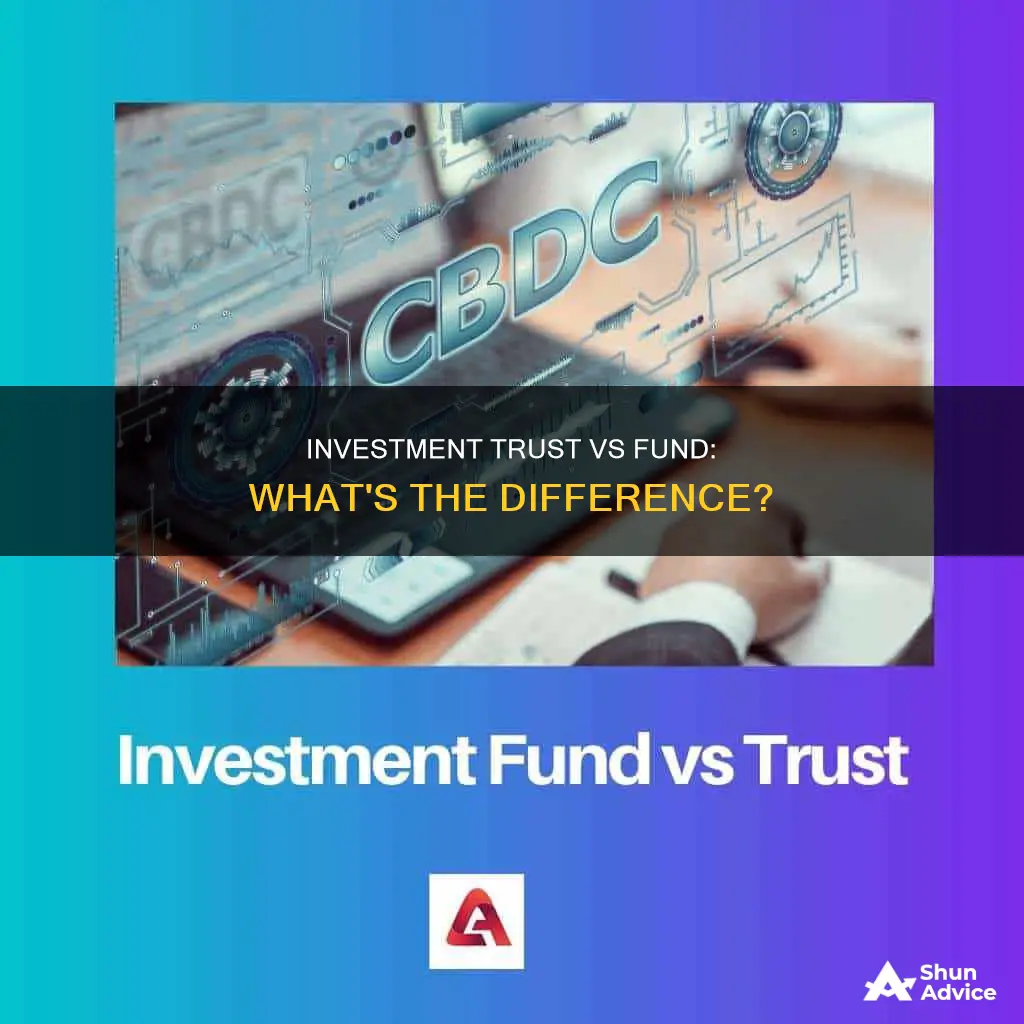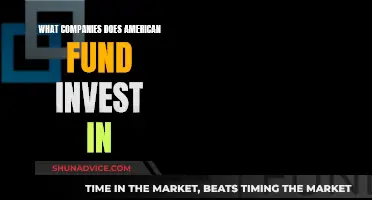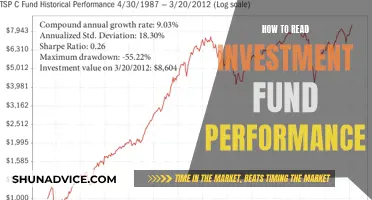
Investment trusts and investment funds are both investment vehicles that pool investors' money to invest in a variety of securities, such as stocks, bonds, and other assets. However, there are some key differences between the two. An investment trust is a type of public limited company that issues a fixed number of shares and is traded on a stock exchange, while an investment fund can be open-ended or closed-ended and is typically not traded on an exchange. Investment trusts are led by an independent board of directors elected by shareholders, while investment funds are managed by fund managers who decide on the investments. Investment trusts have been around for a long time and are known for their unique features, such as the ability to borrow money to invest, while investment funds are more common and provide a broader selection of investment opportunities.
What You'll Learn
- Investment trusts are 'closed-ended' investments with a fixed number of shares
- Funds are ''open-ended' investments that can issue or redeem units at any time
- Investment trusts are listed companies, traded on the stock market
- Funds are not established as companies, but are governed as a legal trust
- Investment trusts can borrow money to invest, this is known as 'gearing'

Investment trusts are 'closed-ended' investments with a fixed number of shares
Investment trusts are closed-ended funds with a fixed number of shares. This means that they issue a set number of shares when they are set up, which investors can then buy and sell on the stock market. As companies, investment trusts have boards and shareholder meetings, unlike mutual funds.
Being closed-ended means that investment trusts are not obliged to buy and sell to meet consumer demand for shares. This can add a degree of stability to investment trust management that a unit trust manager won't have. The fund manager of an open-ended fund, on the other hand, may have to sell assets at a low point to pay investors who want to sell units.
The price of shares in an investment trust is determined by supply and demand in the stock market. This means that the price you pay will almost always be different from the Net Asset Value (NAV), or the value of the underlying assets. If a trust is trading at less than its NAV, it is said to be trading at a discount; if it is higher, it is trading at a premium.
The fixed number of shares issued by investment trusts means that they are known as 'close-end' or 'closed-ended' funds. In contrast, mutual funds are open-ended, issuing or cancelling units as necessary to meet investor demand. There is no limit to the number of units that can be issued at any one time.
Invest in HDFC Property Fund: A Comprehensive Guide
You may want to see also

Funds are ''open-ended' investments that can issue or redeem units at any time
Funds are typically structured as 'open-ended'. This means that investors can buy and sell units directly from and to the fund manager, who issues or cancels units in line with investor demand. There is no limit to the number of units that can be issued at any one time. This is in contrast to investment trusts, which are 'closed-ended' funds that issue a fixed number of non-redeemable shares for investment.
Because funds are open-ended, they can issue or redeem units at any time to satisfy investors who want to buy into the fund or sell their stake. This can cause problems for the fund manager, who may be forced to sell assets at a low point to pay investors who want to sell units.
Most investment funds are unit trusts, though some are exchange-traded funds. The price of units in a fund is directly linked to the value of the underlying assets. Units are typically priced once a day.
Open-ended funds constantly experience inflows and outflows of investors' funds and can encounter difficulties when investors withdraw their money en masse during periods of volatility.
A Guide to Investing in SBI Mutual Funds
You may want to see also

Investment trusts are listed companies, traded on the stock market
Investment trusts are traded on the London Stock Exchange, and when you invest in one, you become a shareholder in that company. Investment trusts are not bound by the same investment rules as unit trusts, giving fund managers more flexibility. As companies, they also have boards and hold shareholder meetings, which mutual funds do not.
The price of shares in an investment trust is determined by supply and demand in the stock market. This means the price you pay will almost always differ from the Net Asset Value (NAV) of the trust. The NAV is the value of the trust's underlying assets, usually expressed in pence per share. If a trust has £1 million worth of assets and one million shares, the NAV is 100p. If a trust is trading at less than its NAV, it is said to be trading at a discount; if higher, it is trading at a premium.
Because investment trusts are listed companies, they can also take on gearing or borrow additional money for investments, which unit trusts are not allowed to do. This means they can take bigger risks, which could lead to bigger rewards or bigger losses.
Maximizing Your HSA Funds: Smart Investment Strategies
You may want to see also

Funds are not established as companies, but are governed as a legal trust
While investment trusts and funds share some similarities, there are some key differences between the two. One of the main differences lies in how they are structured and the rules that govern them.
Funds are typically structured as 'open-ended', meaning there is no limit to the number of units that can be issued or redeemed at any time to meet investor demand. Mutual funds and unit trusts, which fall under the category of open-ended funds, are not established as companies. Instead, they are governed as a legal trust. This means that investors buy and sell units directly from and to the fund manager, and the price of these units is directly linked to the value of the underlying assets.
On the other hand, investment trusts are 'closed-end' or 'closed-ended' funds. They are established as public limited companies and are listed on recognised stock exchanges. As companies, they have boards, hold shareholder meetings, and issue a fixed number of non-redeemable shares for investment. The share price of an investment trust is influenced by two factors: the performance of the underlying assets and market demand for the shares.
The distinction between funds and investment trusts also lies in the rules that govern them. For example, open-ended funds are not permitted to borrow money, whereas investment trusts can engage in gearing, or borrowing money for additional investments. This gives investment trusts more flexibility and the potential for bigger gains or losses.
Taxable vs Nontaxable Funds: Where Should You Invest?
You may want to see also

Investment trusts can borrow money to invest, this is known as 'gearing'
Investment trusts are able to borrow money to invest, a practice known as "gearing". This is not allowed for open-ended funds. Gearing offers fund managers the opportunity to take advantage of a long-term view or to react swiftly to a particular investment opportunity.
The maximum level of gearing is set by an investment trust's board, but the actual level is decided by the investment manager, often in consultation with the board. Trusts may run with a level of structural gearing, but they can also vary gearing depending on the market environment. Some use it to boost capital returns, while others use it to boost income.
In the case of shorter-term borrowing, a fund manager will look at market conditions and decide when it makes sense to borrow and when it doesn't. If a manager sees a lot of good opportunities in the market and believes they can generate a return over and above the cost of debt, they can raise the gearing. Conversely, they can lower it if the cost of borrowing is high or the market outlook is uncertain.
The amount it costs to borrow is an important consideration. In the past, when investment trusts could borrow at 1-2% and stock markets were rising, borrowing to invest made sense. However, as interest rates have risen, the decision has become more complex. If an investment trust manager now needs to generate a 5-6% return to meet their cost of borrowing, it may not be worth it.
Most trusts hold a mixture of fixed and variable debt. For short-term borrowing, fund managers often use a flexible borrowing facility such as an overdraft. For long-term borrowing, they may take out fixed-rate loans called debentures.
Gearing can be a powerful tool to enhance returns for shareholders, but it increases the risk of an investment trust and can magnify losses if the stock market turns down.
Thematic Funds: Diversify Your Portfolio, Invest in the Future
You may want to see also
Frequently asked questions
An investment company is a corporation, business trust, partnership, or limited liability company that pools money from investors to invest in securities.
There are three basic types of investment companies: mutual funds (or open-end funds), closed-end funds, and unit investment trusts (UITs).
Investment trusts are a type of investment fund, but they are structured differently. Investment trusts are closed-ended, meaning they issue a fixed number of shares that are traded on the stock market. Investment funds, especially open-ended funds, can have a variable number of shares and allow investors to buy and sell shares directly from the fund at the net asset value.
Investment trusts can offer access to a diversified portfolio of assets and are typically traded on an exchange, providing more flexibility for investors. However, they may trade at a premium or discount to their net asset value and may have higher fees. Investment funds, especially open-ended funds, offer more liquidity and allow investors to buy and sell shares at the fund's net asset value. However, they may have restrictions on investing in illiquid assets.
In the United States, investment companies are regulated by the Securities and Exchange Commission (SEC) under the Investment Company Act of 1940. They are also subject to the Securities Act of 1933 and the Securities Exchange Act of 1934.







